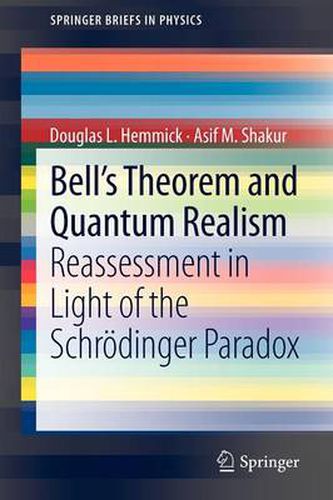Readings Newsletter
Become a Readings Member to make your shopping experience even easier.
Sign in or sign up for free!
You’re not far away from qualifying for FREE standard shipping within Australia
You’ve qualified for FREE standard shipping within Australia
The cart is loading…






This title is printed to order. This book may have been self-published. If so, we cannot guarantee the quality of the content. In the main most books will have gone through the editing process however some may not. We therefore suggest that you be aware of this before ordering this book. If in doubt check either the author or publisher’s details as we are unable to accept any returns unless they are faulty. Please contact us if you have any questions.
Quantum theory presents a strange picture of the world, offering no real account of physical properties apart from observation. Neils Bohr felt that this reflected a core truth of nature: There is no quantum world. There is only an abstract mathematical description. Among the most significant developments since Bohr’s day has been the theorem of John S. Bell. It is important to consider whether Bell’s analysis supports such a denial of microrealism. In this book, we evaluate the situation in terms of an early work of Erwin Schroedinger. Doing so, we see how Bell’s theorem is conceptually related to the Conway and Kochen Free Will theorem and also to all the major anti-realism efforts. It is easy to show that none of these analyses imply the impossibility of objective realism. We find that Schroedinger’s work leads to the derivation of a new series of theoretical proofs and potential experiments, each involving entanglement, the link between particles in some quantum systems.
.
$9.00 standard shipping within Australia
FREE standard shipping within Australia for orders over $100.00
Express & International shipping calculated at checkout
This title is printed to order. This book may have been self-published. If so, we cannot guarantee the quality of the content. In the main most books will have gone through the editing process however some may not. We therefore suggest that you be aware of this before ordering this book. If in doubt check either the author or publisher’s details as we are unable to accept any returns unless they are faulty. Please contact us if you have any questions.
Quantum theory presents a strange picture of the world, offering no real account of physical properties apart from observation. Neils Bohr felt that this reflected a core truth of nature: There is no quantum world. There is only an abstract mathematical description. Among the most significant developments since Bohr’s day has been the theorem of John S. Bell. It is important to consider whether Bell’s analysis supports such a denial of microrealism. In this book, we evaluate the situation in terms of an early work of Erwin Schroedinger. Doing so, we see how Bell’s theorem is conceptually related to the Conway and Kochen Free Will theorem and also to all the major anti-realism efforts. It is easy to show that none of these analyses imply the impossibility of objective realism. We find that Schroedinger’s work leads to the derivation of a new series of theoretical proofs and potential experiments, each involving entanglement, the link between particles in some quantum systems.
.